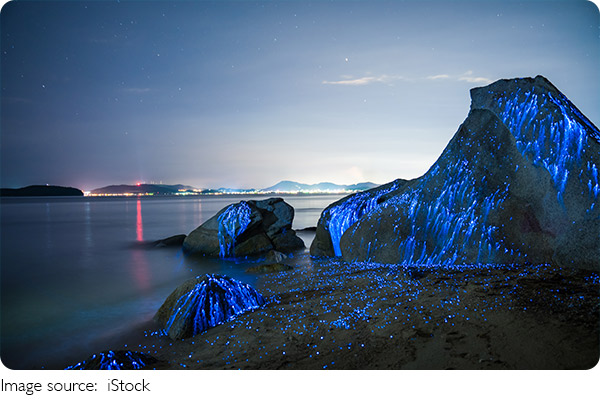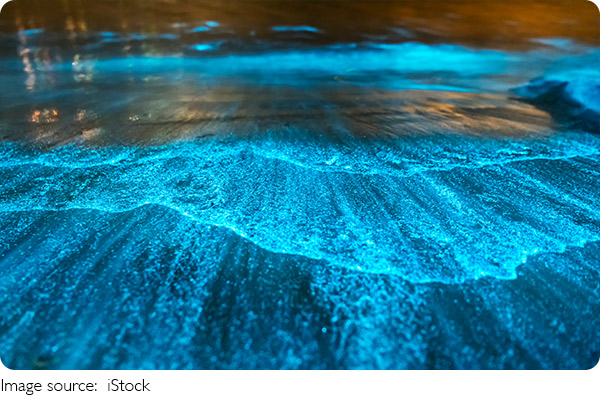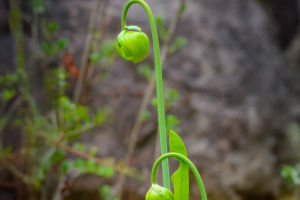Nature’s Ancient Light Show

Lykkers, ever dreamed of walking through a forest lit by nature’s own neon? That’s the marvel of bioluminescence—living organisms generating light in darkness. From fireflies pirouetting at dusk to alien-like creatures in the abyss, this phenomenon sparks awe and curiosity.
Yet its origins have long been cloaked in mystery. A recent study now suggests that these organic light shows may trace back over half a billion years, rewriting the story of life’s most dazzling trick.
Natural Wonder
Imagine a moonless night on a tropical shore, where waves break in neon-blue sprays as tiny plankton dance aglow. Across forests, flocks of fireflies blink secret signals under starlit canopies. In hidden caves, glowworms lace walls with threads of pale light. Such displays serve many roles—courtship, camouflage, or warning—demonstrating how bioluminescence evolved as a versatile survival strategy. Each twinkle tells an evolutionary tale of adaptation, innovation, and the relentless push for advantage in shadowy realms.
Brilliant Origins
Historically, the earliest known light-maker was an ancient ostracod, a tiny crustacean shining some 267 million years ago. Yet new research published in the Proceedings of the Royal Society B hints at an even older genesis. By comparing genetic blueprints across modern octocorals—soft corals glowing in deep-sea habitats—scientists uncovered shared molecular pathways. These common threads point to a distant ancestor living during the Cambrian Explosion, roughly 540 million years ago, when life unfurled into countless body plans and ecosystems.
Deep Timeline
This shift in perspective pushes the dawn of bioluminescence into uncharted territory. During the Cambrian period, marine environments teemed with novel predators and prey, driving rapid innovation. Light production likely offered primitive creatures a stealthy edge—startling attackers or luring unsuspecting prey. By tracing gene families that code for light-emitting proteins, researchers mapped evolutionary branches that predate the earliest fossils. Each genetic marker acts like a fossilized fingerprint, unveiling a timeline far richer than the rock record alone could provide.
Light Chemistry
At the heart of every living lantern lies a chemistry lab of proteins and enzymes. Most organisms rely on luciferins, organic molecules that, when oxidized by the enzyme luciferase, emit visible light. This reaction requires only oxygen and adenosine triphosphate (ATP), the cell’s energy currency. In glowworms, the process unfolds in tiny bioluminescent cells; in deep-sea fish, specialized organs concentrate chemicals to glow like lighthouses. Studying these molecular dances reveals nature’s elegant solutions for converting chemistry into illumination.
Survival Tool
Beyond spectacle, bioluminescence serves critical functions. Predators such as anglerfish dangle glowing lures to ensnare prey in pitch-black depths. Some squid emit sudden flashes to confuse attackers, then jet away under cover of light. Fireflies flash intricate codes to attract mates, each species speaking its own luminescent language. Even corals use subtle glows to foster symbiotic relationships with microscopic algae. Across habitats, glowing becomes a language of life—warn, attract, evade, or communicate in environments where vision is limited.
Modern Research
Today’s scientists harness bioluminescent tools for breakthroughs in medicine and technology. Glow-in-the-dark proteins act as biological tracers, illuminating cancerous cells or monitoring gene activity in living tissues. Environmental monitors employ luminescent bacteria to detect water pollution. In synthetic biology, engineers aim to create self-illuminating plants for street lighting. These innovations reflect a centuries-old fascination, transforming nature’s glow into a beacon of human ingenuity and hope.

Conclusion
Tracing the ancient roots of bioluminescence reminds readers of life’s relentless creativity. From a half-billion-year-old ancestor to today’s glowing marvels, nature’s disco lights narrate an epic of survival, adaptation, and wonder. As research advances, these luminous clues guide conservation efforts, inspire technological leaps, and deepen our bond with the hidden wonders around us. Next time a firefly dances or plankton sparkles, pause to marvel at the ancient glow coursing through life’s grand tapestry.
-
 Zebra Stripe TrickHow Do Zebras Confuse Predators with Their Stripes? Discover the Secret to Their Survival!
Zebra Stripe TrickHow Do Zebras Confuse Predators with Their Stripes? Discover the Secret to Their Survival! -
 Inside the Plant StemEver wondered how a stem keeps a whole plant upright and thriving?
Inside the Plant StemEver wondered how a stem keeps a whole plant upright and thriving? -
 Intermittent FastingHow intermittent fasting can improve metabolism, excess weight, and boost overall health.
Intermittent FastingHow intermittent fasting can improve metabolism, excess weight, and boost overall health.